Barents Sea#
Photos by Sergey Semenov and Sergey Korolev, Sergey Shandin, members of the AirPano Team that is a member of the global-geography Consortium.8 May 2019
with kind permission of AirPano
Barents Sea Coast, Russia
Since 2006, AirPano team has been capturing all range of corners and landscapes of our planet. A rare expedition goes without certain challenges, but nothing can stop us on our way towards the goals that have been set. And it is extremely important to show the beauty of the remote places that are hard to reach but have a lot of outstanding natural landmarks that are hardly known.
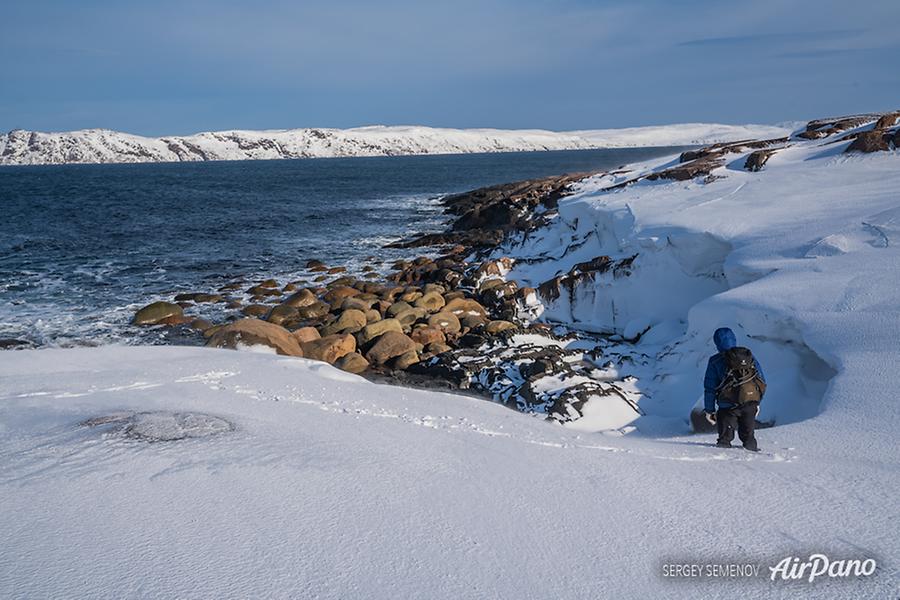
© AirPano
One of these destinations is the Barents Sea. It is a marginal sea of the Arctic Ocean and is bordered by the northern coast of Europe and the archipelagoes of Svalbard, Franz Joseph Land and Novaya Zemlya. The sea has the area of 1,424,000 km² with a maximum depth of 600 meters.
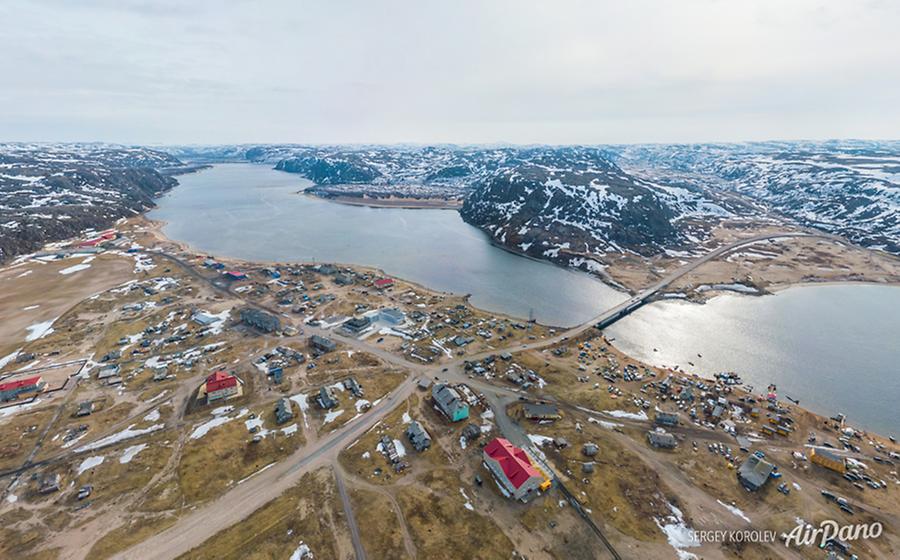
© AirPano
In the Northern part of the Kola Peninsula, just near the Murmansk coast, there is the gulf of Teriberka. It is a bay that "cuts" as deep as 9 km inside the land and creates the Teriberka Peninsula. There are three smaller bays in this gulf: Lodeynaya, Orlovka (former Korabelnaya) and Zavalishina. On the south coast, at the mouth of the Teriberka River, there is a rural settlement bearing the same name. The fact is that, in this case, the stress falls on the second syllable (in the Russian language). The name of the settlement and the river comes from the ancient name of the Kola Peninsula, that was previously called Ter.
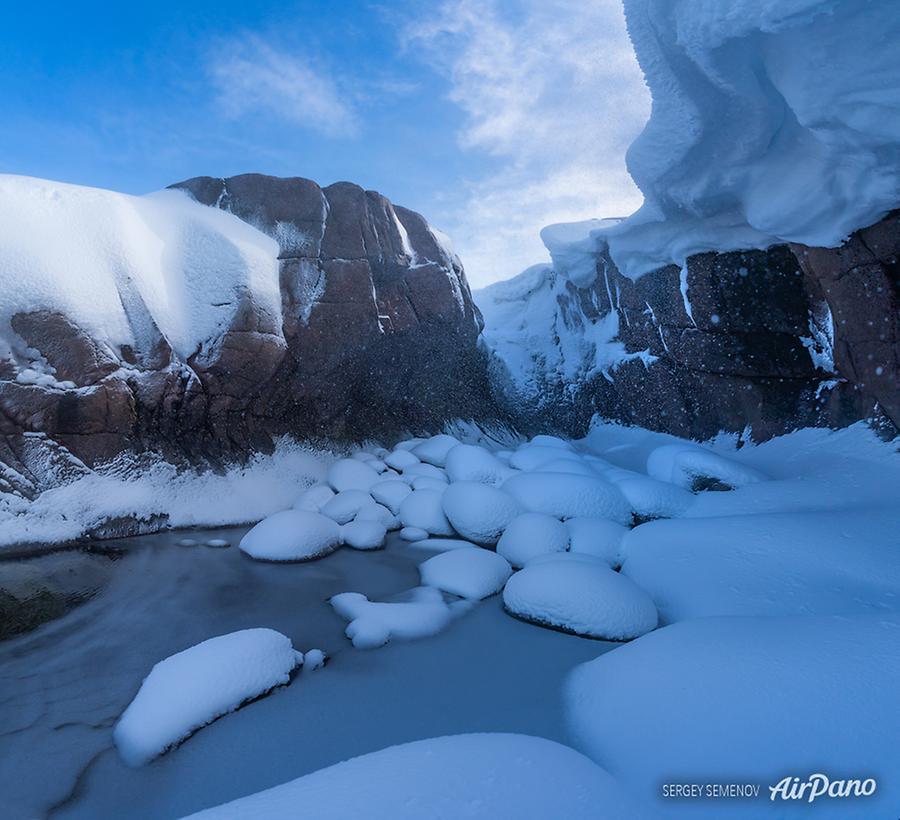
© AirPano
The time beyond the polar circle seems to stop: in summer the sun hardly goes down and in winter there is an endless night. The rocky coastline, tundra and incredible sky over endless sea expanses, all these things are the severe beauty of the Russian North. This is the place of strong waves and winds, especially winds! The gusts can reach 60 m/sec and resound loudly in the neighbouring coast cliffs. Everything in the wind's path is doomed to fall.
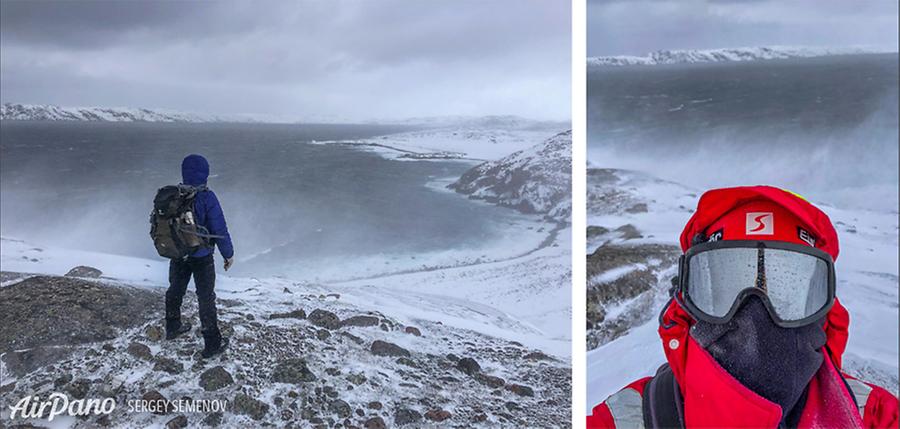
© AirPano
There is a good reason for the northern seas to be turbulent and restless: the weather rarely occurs to be good, while in winter, in the season of the bright colours, the cold and wind are especially strong here. But still, the Teriberka Bay is considered to be the best place for watching the phenomenon of the polar lights so AirPano team could not avoid this fact.
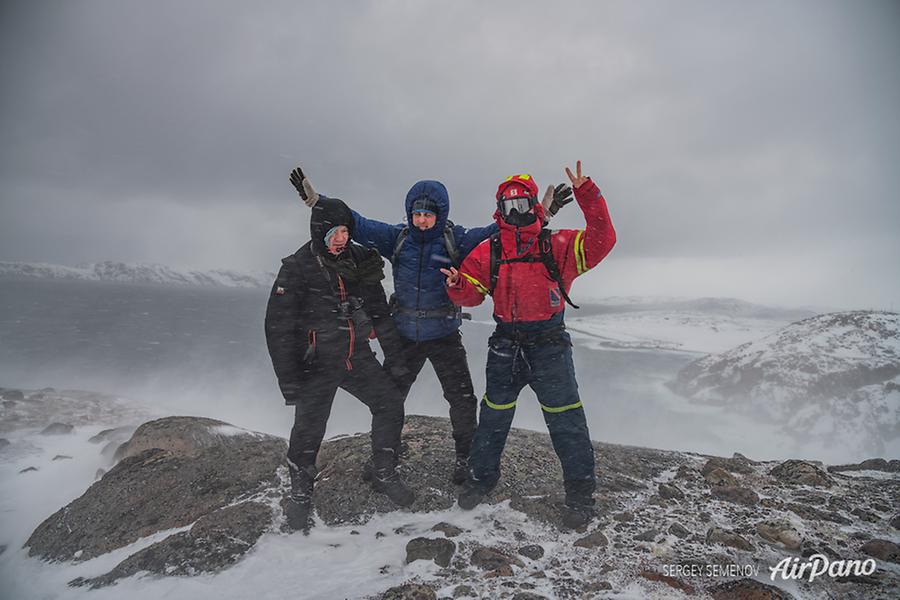
© AirPano
This was not our first visit to Teriberka. The first time we couldn’t capture polar lights because of dense clouds. This time we travelled there as a part of the photo tour together with Sergey Korolev from Nord Trails. It was specially organised according to the forecast of the Northern lights in order to catch good weather. One day we were really lucky with the weather, so there are several panoramas of aurora in our virtual tour. Unfortunately, wind and blizzard didn’t let us use the drone. But Sergey Korolev has recently visited Teriberka one more time and has created a few 360° aerial panoramas that have entered our virtual tour. So now anyone can enjoy the amazing landscapes of the Barents sea coastline in a comfortable atmosphere.
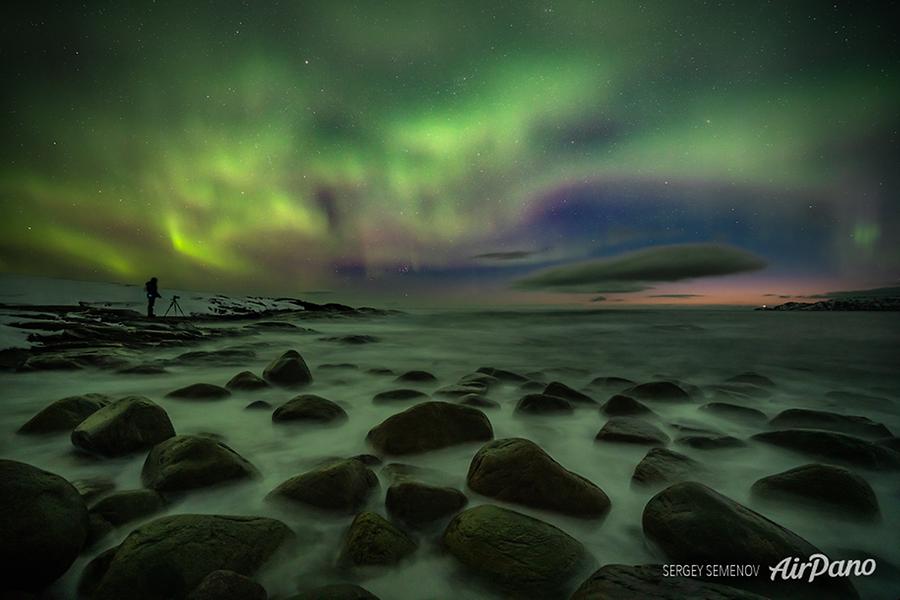
© AirPano